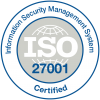Quixy is that platform which empowers you to create custom business applications without or less need for coding. In this guide, we'll walk you through the key concepts and features to help you get started quickly and easily.
Within the platform, you have the capability to automate and manage processes ranging from simple manual tasks to semi-complex, and highly-complex processes. If you're curious about the types of processes that can be automated using Quixy, here are some sample use cases for reference.
USE CASE (SIMPLE)
Leave Application and Approval Process
Description: Automating the leave management process to allow employees to request leave and receive approvals without manual intervention.
Automation Steps:
Employee Requests Leave: Employees fill out an online form specifying the type of leave (e.g., vacation, sick leave), dates, and any necessary details.
Automatic Notification: Upon submission, the system automatically notifies the employee's manager(s) about the leave request.
Manager Approval: Managers can review leave requests, approve or deny them directly within the system.
Employee Notification: Once approved, the system notifies the employee of the approved leave.
Benefits: Eliminates the need for manual paperwork and email communication, saving time for both employees and managers. Provides transparency into the leave approval process, with a clear record of requests and approvals. Reduces the risk of errors associated with manual data entry and communication.
USE CASE (SEMI-COMPLEX)
Customer Onboarding Process
Description: Automating the customer onboarding process can ensure a smooth transition for new customers, from initial contact to service activation.
Automation Steps:
Capture customer details through an online form.
Automatically assign tasks to various teams (sales, operations, support) based on the customer's requirements.
Track progress and send notifications to stakeholders at each stage.
Benefits: Reduces manual handoffs between teams, ensures timely responses to customer inquiries, and provides visibility into the onboarding pipeline.
USE CASE (COMPLEX)
Supply Chain Management
Description: Automating supply chain management involves orchestrating a series of interconnected processes, from procurement to distribution, across multiple departments and external partners.
Automation Steps:
Digitize procurement requests and approvals.
Integrate with suppliers for real-time inventory updates and order processing.
Automate warehouse management and logistics for efficient inventory handling and delivery.
Benefits: Optimizes inventory levels, reduces lead times, minimizes stock outs, and enhances overall supply chain visibility and efficiency.
Let's get a basic understanding of the platform's core features to better understanding of its structure.
Workspaces: Workspaces are virtual areas where you can organize and manage your projects, data, tables, and applications. Think of a workspace as a digital office space where everything related to a specific project or task is kept together for easy access and collaboration.
Roles and Users: Users are individuals who interact with the system. Each user has a unique identity and can perform actions within the system based on their permissions. Roles are a way to group users based on their responsibilities or permissions. For example, in a company's system, there might be roles like "Manager," "Employee," or "Admin." Each role defines the permissions and access levels for the users assigned to that role.
Learn more about Roles and Users..
Applications: Applications are the building blocks of your business processes. They are custom-built to automate workflows, and streamline operations.
Learn more about Applications..
Workflow: Workflow refers to the sequence of steps and actions that are necessary to complete a task or a process. It often involves a series of interconnected tasks, decisions, or approvals that need to be performed in a specific order to achieve a desired outcome.
Sandbox: A sandbox is a safe space where you can test your applications before deploying them to production. It allows you to experiment with new features and configurations without affecting your live applications.
Business Rules: Business rules are used to automate actions and enforce data validation. You can define rules to perform calculations, or trigger notifications based on certain conditions.
Learn more about Business Rules and Validations..
Data Tables: Data tables are like organized containers where you can store different types of information. This information can either be generated by a software application or uploaded manually by a user. Imagine them as digital spreadsheets that keep your data neat and accessible.
Learn more about Data Tables..
Data Source: A Data Source refers to the origin or location of data. It can be any place where data is stored, managed, or retrieved from.
Learn more about Data Source..
Reports: Reports allow you to visualize and analyze your data. You can create different type of reports to gain insights into your business processes.
Dashboard: Dashboard is nothing but a landing page. You can create various and numerous dashlets to monitor key metrics, track progress, and stay informed about your business operations.
Integrations: Quixy enables seamless integration with various third-party applications, allowing you to connect your custom-built solutions with external systems and services. This helps streamline your workflows, reduce data silos, and improve overall business efficiency.
Learn more about Integrations..
With this guide, you should now have a good understanding of the key concepts and features of the platform. Start exploring and building your own custom applications to transform your business processes.
.png)






